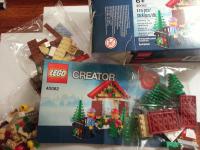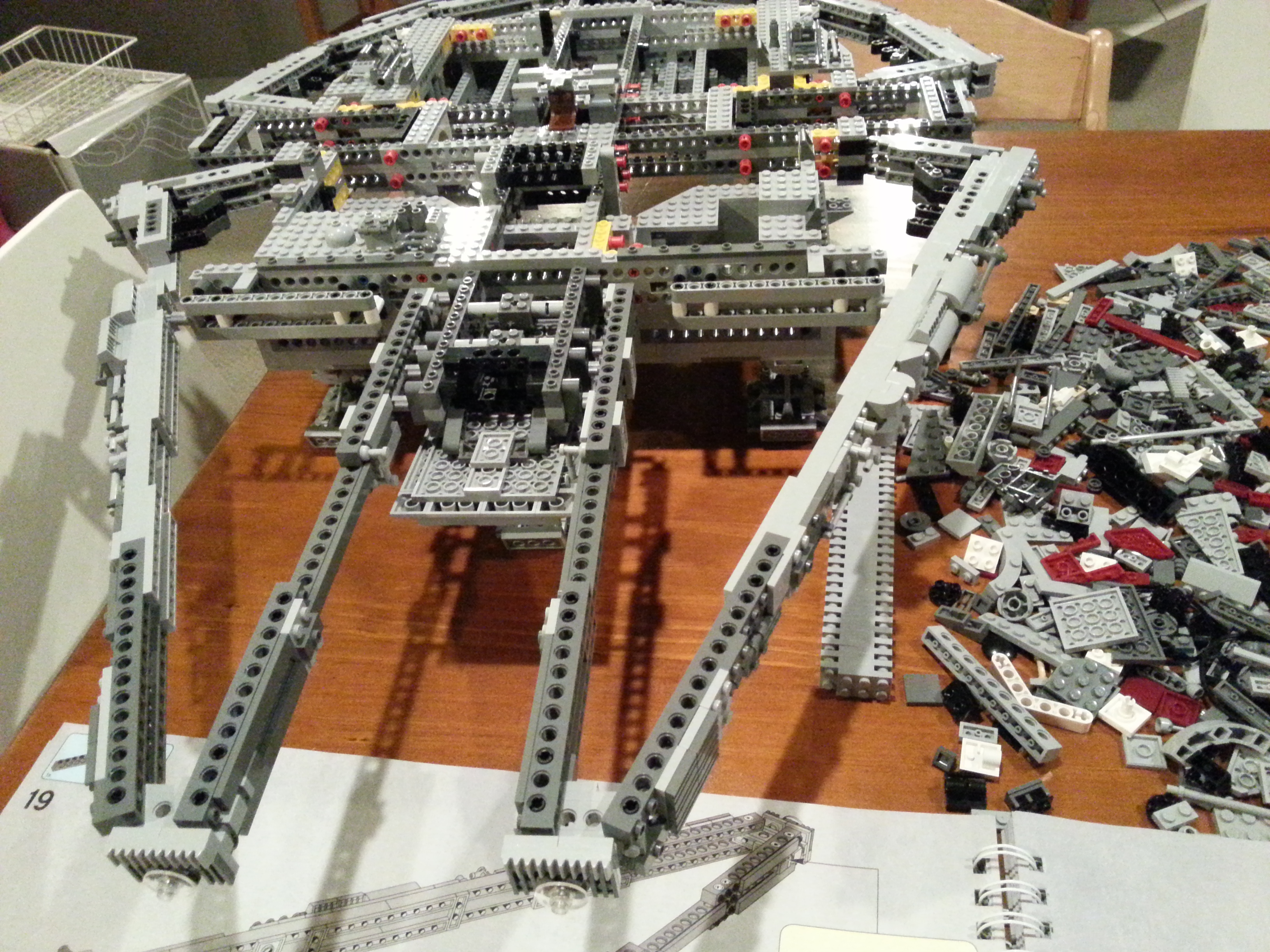
 If like me you’ve ever struggled with the temptation that having a closet or room stuffed with shiny new Lego sets for investment presents in terms of building and playing or displaying them, this short blog may help! Rarely have I succumbed to this temptation. I tend to try and keep my collecting hobby side of the Lego game separate from the investing side. There is occasion where I have dipped in to the investment pool to provide a last minute gift for a young lad or lass, or when I really just had to build the Lone Ranger Train. One thing that helps me do this is looking at the decision to open an investment set with a clear approach involving the true cost of doing so. Often I hear talk on the forums of “Buy what you like, so you can open it if investment growth isn’t as strong as you’d hoped” or “I only paid 50% of retail for it so I might just open and build it…” The decision to open a set should be made with as much information as possible when you are a profit maximising investor. When you open a set the price you paid for it should have almost zero consequence on that decision. This is a very important mind shift for most people. The trade off you make when opening the set does not relate to the price paid, instead it is: When you open a set the true cost of doing so is the opportunity cost you forgo. This is mainly related to the current secondary market price minus a few other factors. If you have a set in hand the trade off you make when “consuming” it is the price you could currently sell it for. This can be approximated using the Brickpicker current market price for new sets, or you can estimate that cost yourself if you could sell it locally for a different amount. Basically you take what the maximum is you think you could successfully sell it for right now. Now from that there are a few deductions to take into account:
If like me you’ve ever struggled with the temptation that having a closet or room stuffed with shiny new Lego sets for investment presents in terms of building and playing or displaying them, this short blog may help! Rarely have I succumbed to this temptation. I tend to try and keep my collecting hobby side of the Lego game separate from the investing side. There is occasion where I have dipped in to the investment pool to provide a last minute gift for a young lad or lass, or when I really just had to build the Lone Ranger Train. One thing that helps me do this is looking at the decision to open an investment set with a clear approach involving the true cost of doing so. Often I hear talk on the forums of “Buy what you like, so you can open it if investment growth isn’t as strong as you’d hoped” or “I only paid 50% of retail for it so I might just open and build it…” The decision to open a set should be made with as much information as possible when you are a profit maximising investor. When you open a set the price you paid for it should have almost zero consequence on that decision. This is a very important mind shift for most people. The trade off you make when opening the set does not relate to the price paid, instead it is: When you open a set the true cost of doing so is the opportunity cost you forgo. This is mainly related to the current secondary market price minus a few other factors. If you have a set in hand the trade off you make when “consuming” it is the price you could currently sell it for. This can be approximated using the Brickpicker current market price for new sets, or you can estimate that cost yourself if you could sell it locally for a different amount. Basically you take what the maximum is you think you could successfully sell it for right now. Now from that there are a few deductions to take into account:
- The listing and selling fees if applicable
- Time to set up the sales listing
- Packaging and postage
- Time to post or meet the seller
- Tax from any profits remaining if applicable
If you can estimate those costs you’ll have a pretty good idea of the expected gross revenue you would have from selling the set. This is you opportunity cost.  Now there are a few other things to take into account as well. Firstly when you open a Lego set to build you don’t “consume” it. A Lego set is not like a candy bar or loaf of bread, after using it you are still left with a tangible asset – the used set. This used set still has a value. The used value of sets are tracked by Brickpicker as well and you can estimate just like as above for a new set. So if you plan on keeping your opened set indefinitely then you can’t discount your opportunity cost by this used set value. But if you don’t and you just want to have the build experience, take a few photos, and maybe display it for a few weeks you can subtract the used set value to determine what the act of opening has cost you. Things get more complicated if your intentions are to build the set and display it for a longer term, or if you think you’ll keep it forever but change your mind later on and decide to sell it. To work out the cost here you’ll need two estimates. The future value of a used set and the future value of the set if it is still new and sealed. This can obviously be pretty hard to determine. My advice would be to look at the current prices for similar sets to the one in question. Check out similar sized sets and sets from the same theme and look for the price difference between a sealed set and a used one. That should give you a bit of a guide to the future opportunity cost. So in conclusion, if you want to open a set go ahead, but remember the price for doing so is not the cash you paid at the retail counter but the opportunity cost incurred by not being able to sell a new sealed set.
Now there are a few other things to take into account as well. Firstly when you open a Lego set to build you don’t “consume” it. A Lego set is not like a candy bar or loaf of bread, after using it you are still left with a tangible asset – the used set. This used set still has a value. The used value of sets are tracked by Brickpicker as well and you can estimate just like as above for a new set. So if you plan on keeping your opened set indefinitely then you can’t discount your opportunity cost by this used set value. But if you don’t and you just want to have the build experience, take a few photos, and maybe display it for a few weeks you can subtract the used set value to determine what the act of opening has cost you. Things get more complicated if your intentions are to build the set and display it for a longer term, or if you think you’ll keep it forever but change your mind later on and decide to sell it. To work out the cost here you’ll need two estimates. The future value of a used set and the future value of the set if it is still new and sealed. This can obviously be pretty hard to determine. My advice would be to look at the current prices for similar sets to the one in question. Check out similar sized sets and sets from the same theme and look for the price difference between a sealed set and a used one. That should give you a bit of a guide to the future opportunity cost. So in conclusion, if you want to open a set go ahead, but remember the price for doing so is not the cash you paid at the retail counter but the opportunity cost incurred by not being able to sell a new sealed set.





Recommended Comments
There are no comments to display.
Join the conversation
You can post now and register later. If you have an account, sign in now to post with your account.
Note: Your post will require moderator approval before it will be visible.